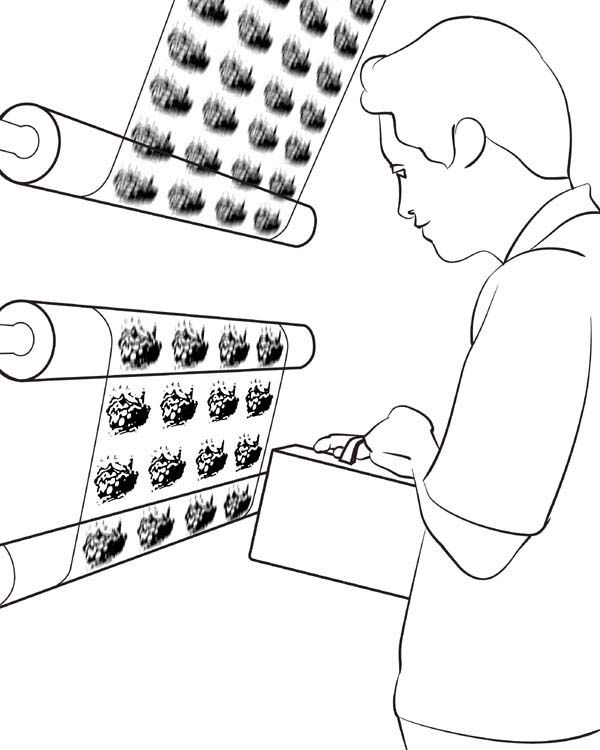Observations of high-speed objects
Does a stroboscope make small illustrations being printed by a gravure printing machine look like they're standing still?

If we use a stroboscope to observe identical figures in continuous motion, like illustrations being printed by a printing machine, it provides a very pronounced strobe effect. Since the stroboscope lets you see printed images as stationary images regardless of size, you can make out text and figures clearly. Stroboscopes are widely used for this purpose for various types of materials ranging from film to cardboard.
How can I use a strobe to align printing positions in a printing process?
Since the stroboscope relies on the visual persistence of the human eye, shorter flashing intervals are more effective for observing printing positions. For example, if the pattern pitch is 150 mm and the speed is 300 m/min, the strobe frequency should be set to about 33 times per second to match the pattern pitch. Setting the strobe to this flashing frequency lets you easily observe and align images. On the other hand, if the pitch is 700 mm and the speed is 100 m/min, the flashing frequency is about two flashes per second. In this case, the desired strobe effect will not result. (A flashing frequency of five times or more per second would provide the desired effect.) To resolve this issue, you should make the surrounding area dark or use a separate strobe with a high-intensity light source.
Can the strobe make a mechanism that moves up and down at ultrahigh-speed, like the needle of a sewing machine, look like it's standing still?
Yes. If you irradiate a strobe light onto an object moving in reciprocating motion at a constant frequency, the object will appear to be standing still if the strobe frequency corresponds to the reciprocating frequency. This lets you to detect any abnormalities even while the object is in motion. Slightly reducing the strobe frequency of the stroboscope will result in a slow-motion image. The stroboscope lets you observe ultrafast motion very easily and at low cost (compared to using a high-speed video camera).
Will a stroboscope let me observe the vibrations of a speaker cone?
The stroboscope makes it possible to observe a speaker cone vibrating at high speeds driven by the input audio signal. You can use Sugawara's pulse generator to continuously observe changes in vibration from low to high frequency. For more information, refer to "Observing speaker cone vibrations."